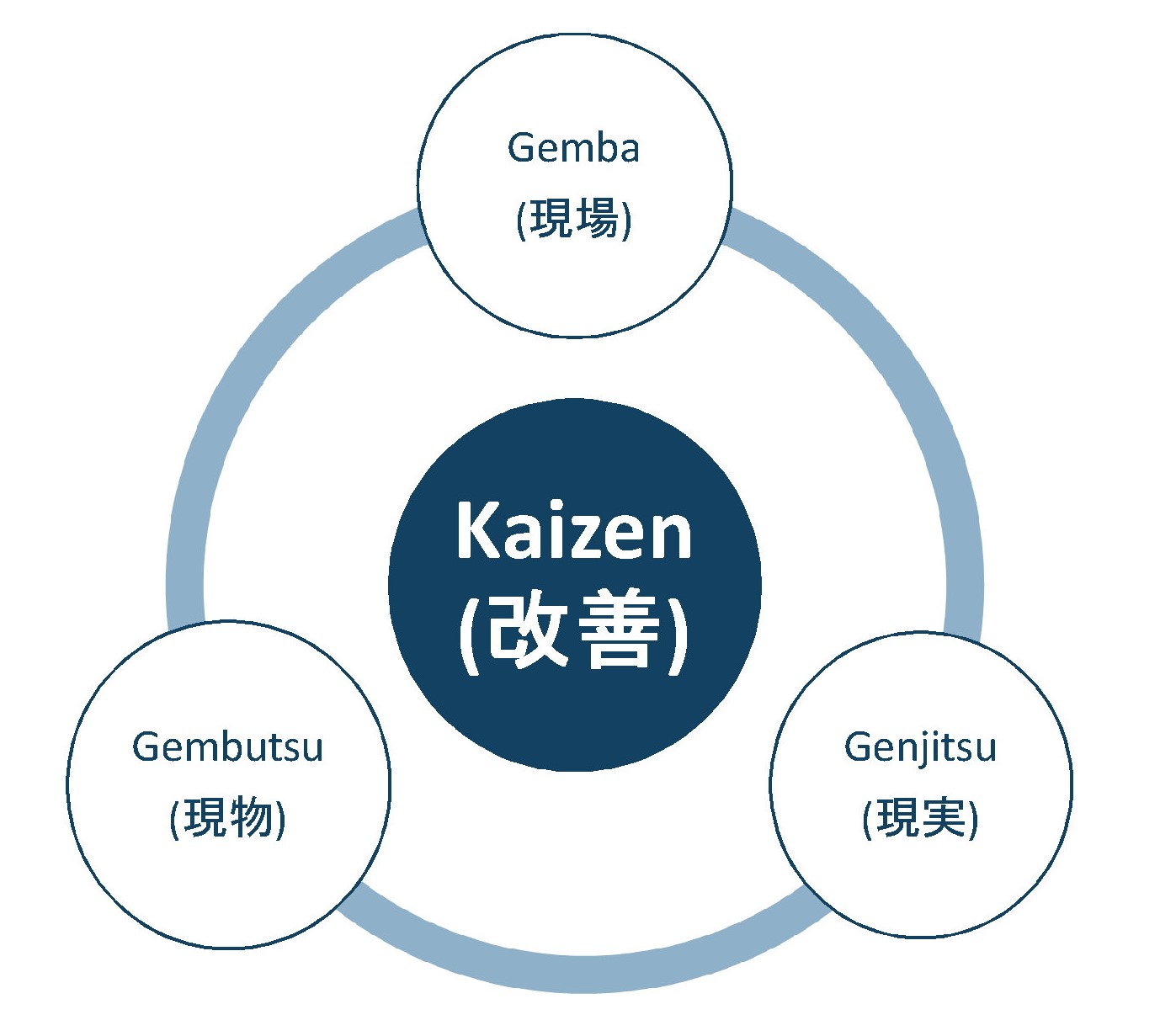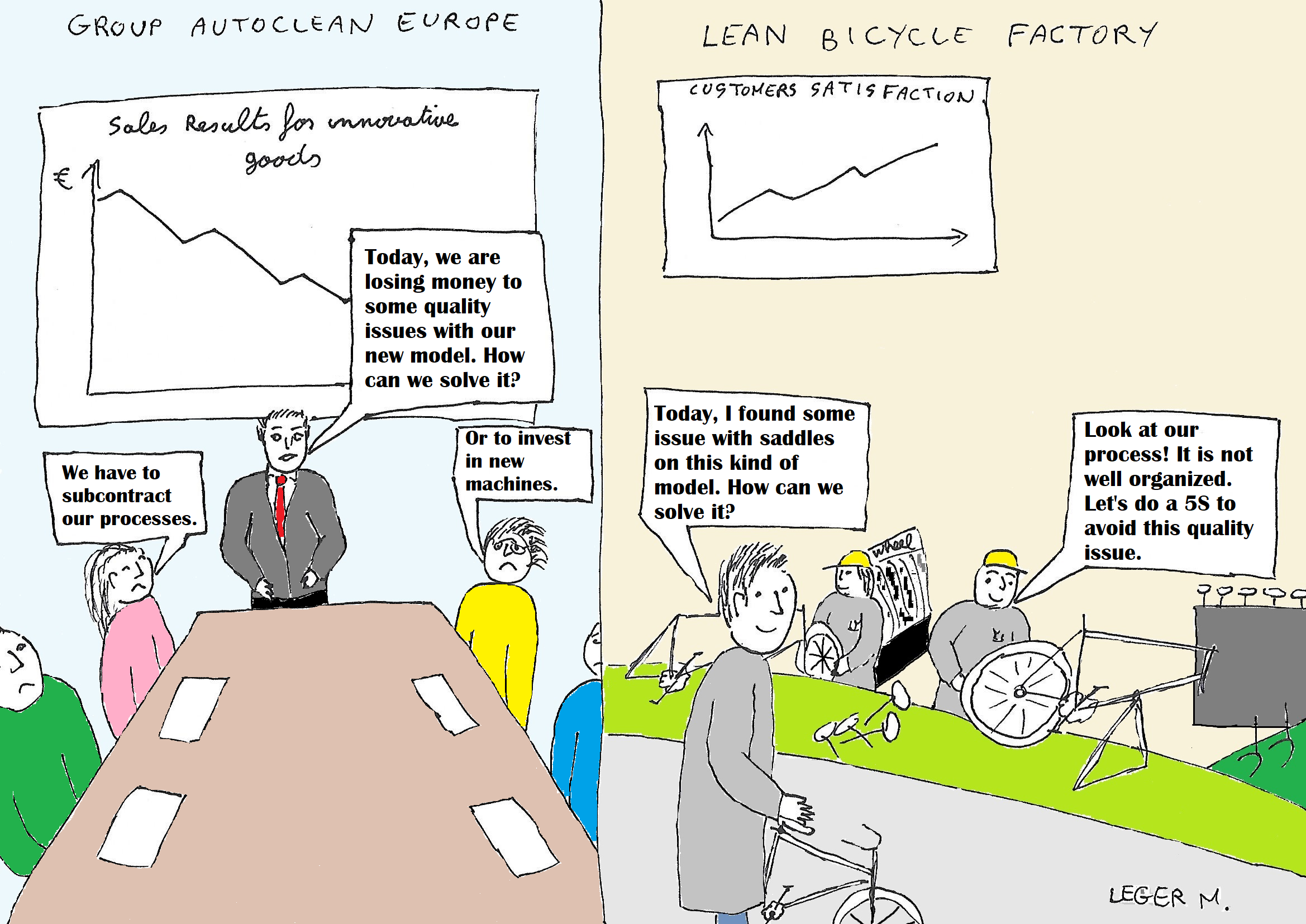Going to the real place (Gemba) where things happen (Genjitsu), a good way to improve your business
“The foundation of a scientific method is to continuously check that the theory matches with the reality. When it doesn’t, then it’s the theory that is wrong. The reality remains!”
This key principle is one of the first things that I learned when I started my journey in Lean and Continuous Improvement. It is the base for a successful Kaizen (改善) event. The Kaizen philosophy has to respect 3 elements: Gemba (現場 - the real place), Gembutsu (現物 - the real data) and Genjitsu (現実 - the reality).

On this article, I will explain to you why these three elements from the Kaizen philosophy are crucial if you want to improve a business and do not respect them might drag you down to not take the best decisions.
Gemba (現場), the real place
If you wish to understand your business and find opportunities to reach Excellence, you have to go to the real place where things happen. In fact, it will help you to find the best solutions to your problems. For example, in a production company, being to a meeting room to solve a quality issue is not efficient. You have to go to the shop floor/production line to observe what is happening.
Gemba (現場) or being on the real place is an essential source to collect correct data. Collecting data is your FIRST ACT before performing improvements. Furthermore, after doing your brainstorming (PLAN), it will help you to DO (put in place) immediate actions on the correct location to protect your customers and business. For example, you cannot put an efficient quality wall from an office without seeing parts and going to the real place. As well it will facilitate you to CHECK if your immediate actions are well deployed and had results. Then, being in the real place will facilitate you to perform the correct LONG-TERM ACTIONS. For example, if you decide to perform a 5S on a line, the standard has to be realized on the line with people working on it.
Gembutsu (現物), the real data
To solve an issue or to improve a business, you have to do that with real data. You have several sources of data:
- ERP system
- Equipment
- Parts produced
- Raw materials
- …
Gembutsu (現物) represents all data and instruments that you have to measure your performance and to move forward.
When I worked for an automotive industry in Poland, I was in charge to put in place an automatized daily dashboard with KPIs to measure performances. The goal was to find opportunities in term of improvements and to reduce “bad surprises” at the end of the month. Following this daily report, choices (made by management) in term of improvements were based on the amount (in złoty) and type of scraps that each project generated. Then our improvements were controlled with this tool with positive impacts on projects’ margins.
Another example might be a company producing bicycles (like Lean Bicycle Factory). If you have a lot of scratch on saddles and it is representing a huge amount of money, you have to collect all data linked to those parts (where do you use them, where they are stored, what movements do you do with them,…) to find real root causes of your problems. Try to be like Sherlock Holmes who want to solve issues, see and collect all data and clues that can help you.
Genjitsu (現実), the reality
In a business, Genjitsu (現実) means the reality: your people and their tasks.
In fact, your people who are working for you represent the reality of your business. They are confronted on the daily basis to processes and issues. As well, if there is a problem, they will be the most qualified people to solve it. Generally, they will find efficient and easy solutions to put in place with low costs. It is not because that they are not managers that they cannot support you and give you ideas to solve issues or improve your business. Like every human, they have a brain and they can think. If you ignore this source of data (employees) and you want to deploy solutions alone, you will fail!
“The success of an improvement is equal to the percentage of improvement in the process(es) multiplied by the percentage of staff buy-in.”
Furthermore, considering your people will help you to embrace continuous improvement, reach Excellence and find new talents in your team.
Have you already tried to apply those three Kaizen principles to reduce your costs? Can you confirm my key principle? Please, feel free to give your feedback below or to contact our consultant and lets him go and see your business to help you to find new opportunities’ improvements.

